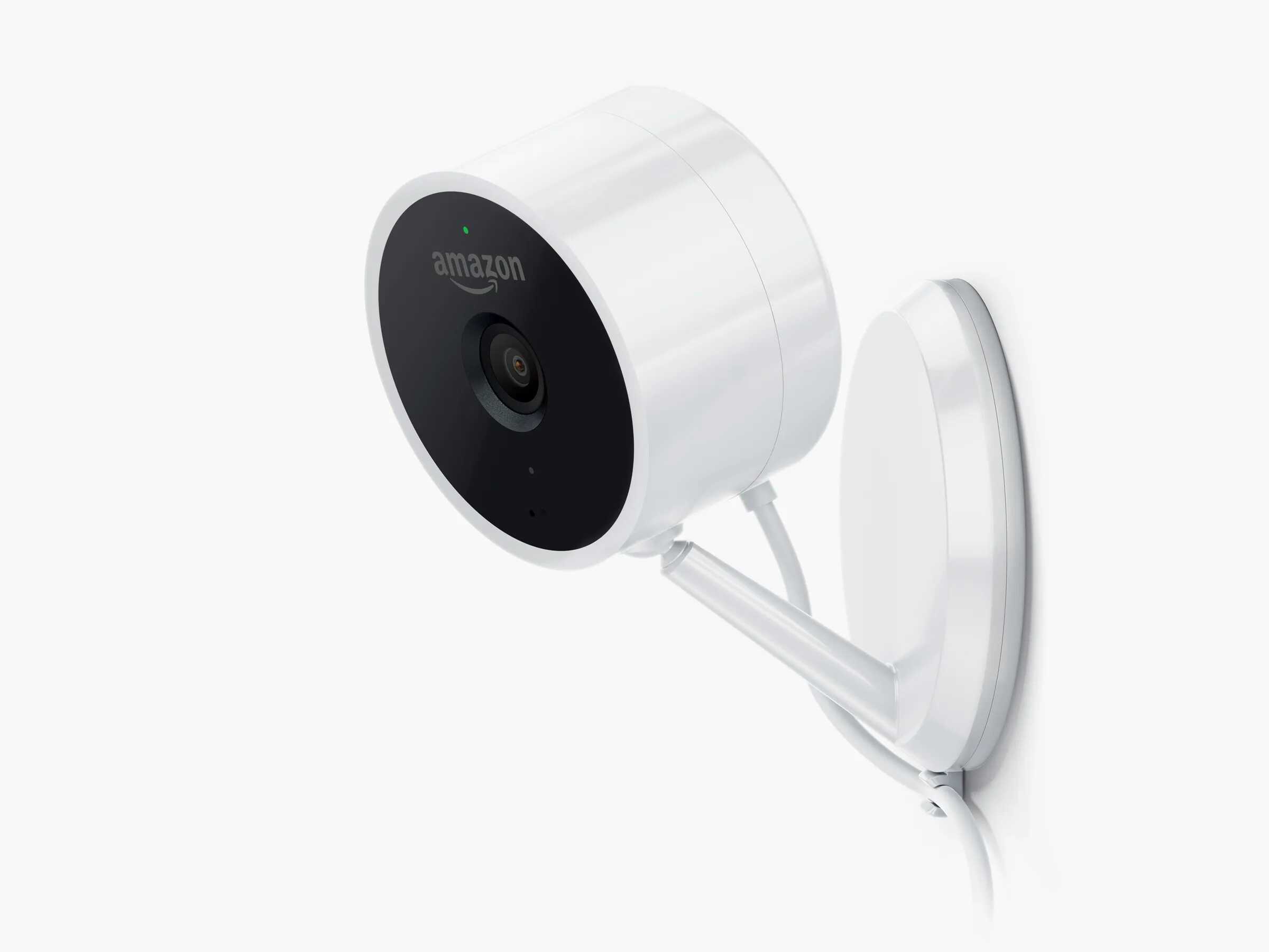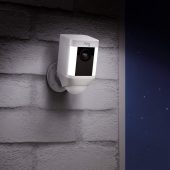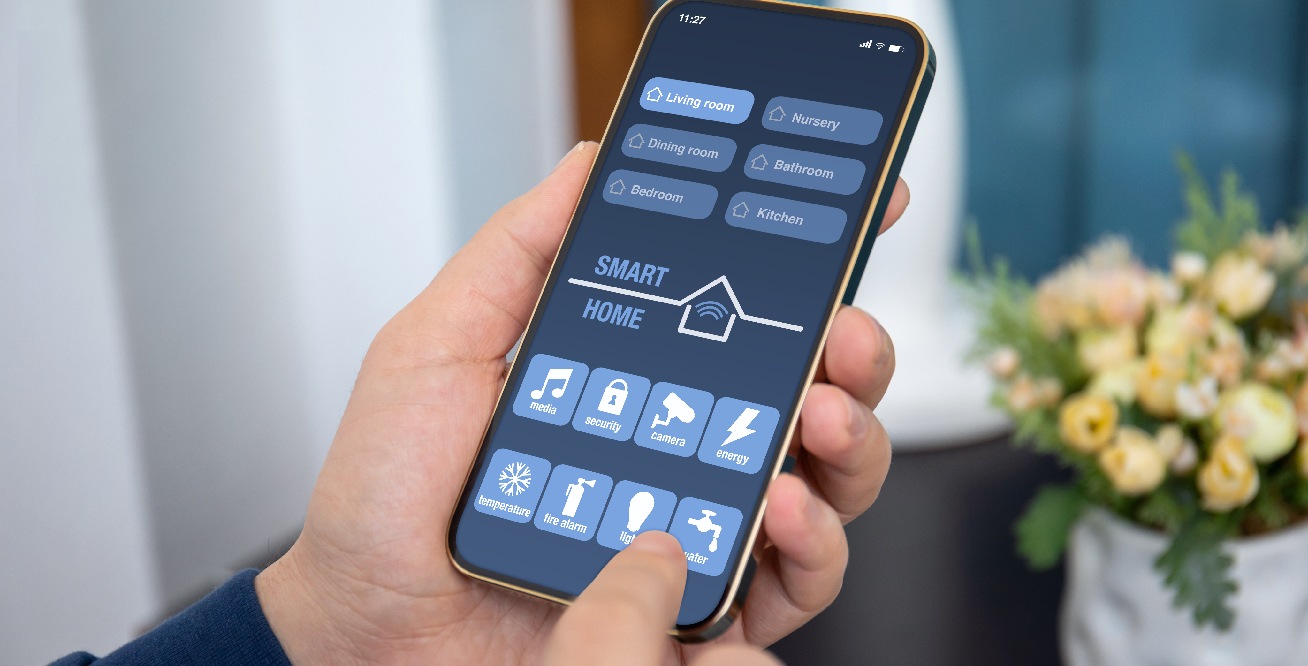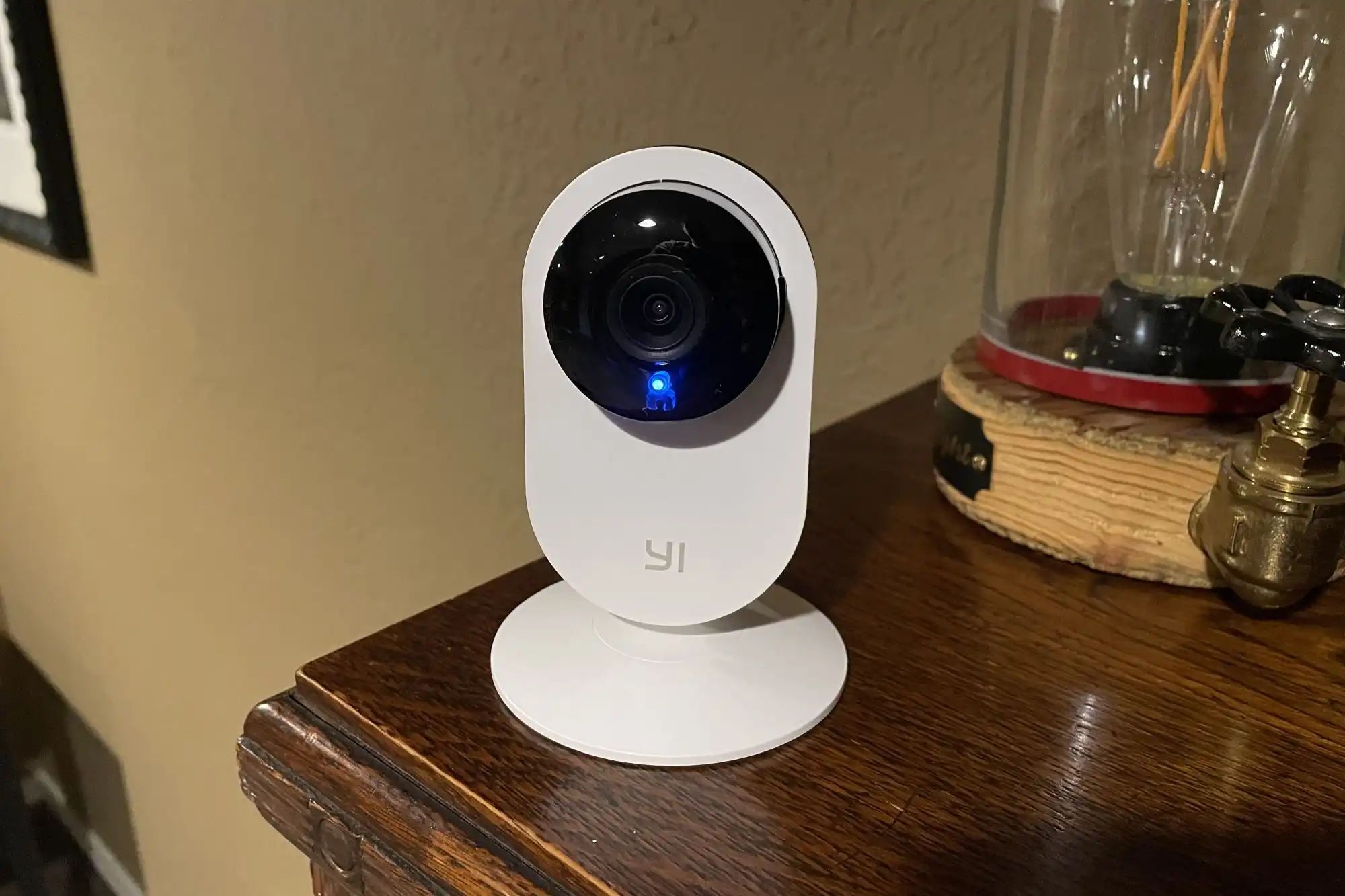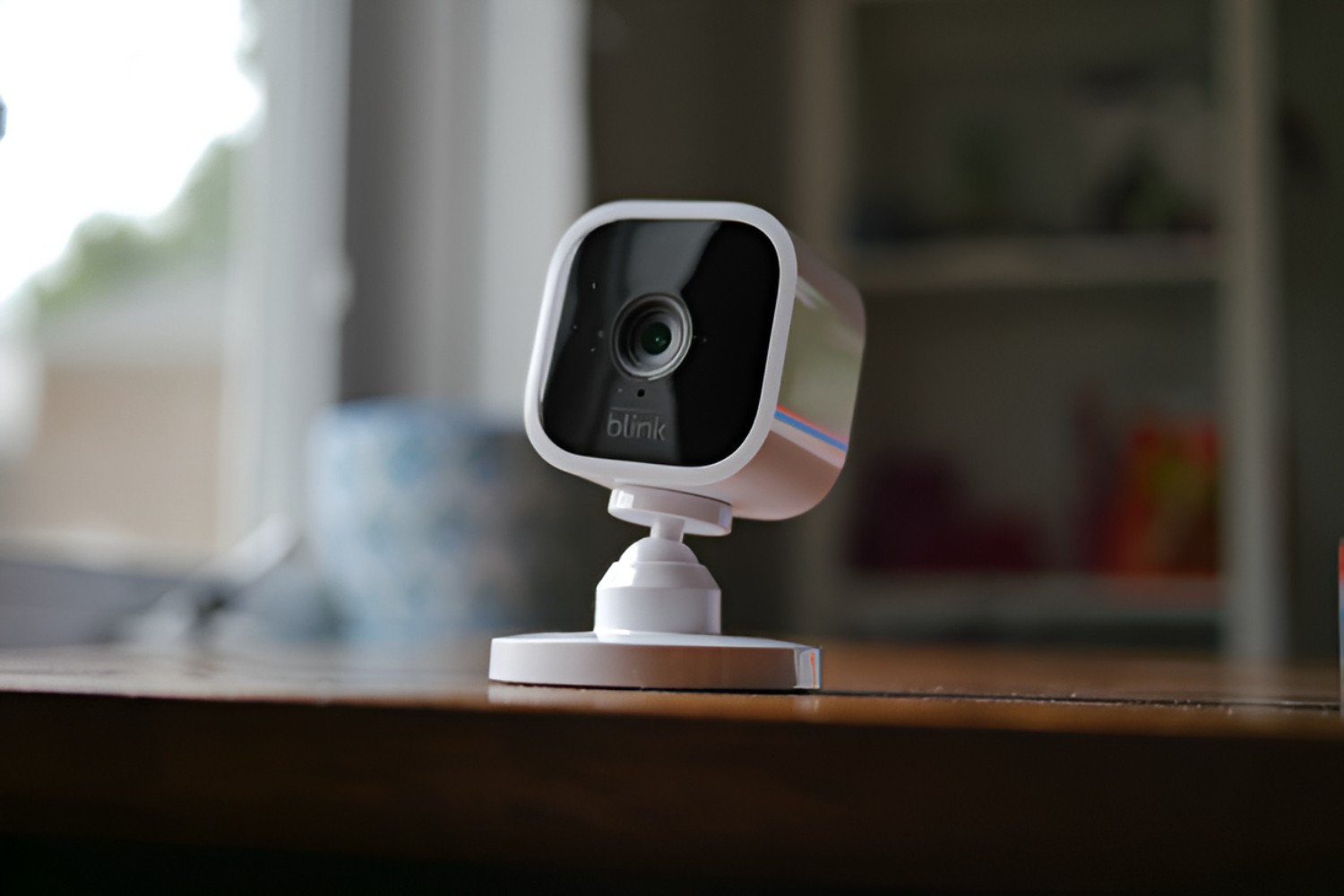Introduction
Home security cameras have become a popular tool for ensuring the safety and protection of our homes and loved ones. They provide us with a sense of security and peace of mind, allowing us to monitor our property even when we are away. However, there may be certain situations or circumstances where you may need to temporarily disable your home security cameras.
There can be various reasons for wanting to disable your home security cameras. It could be during a family gathering or social event when you want to ensure privacy for your guests. Maybe you’re performing maintenance or repairs around your property and don’t want to constantly trigger false alarms. Whatever the reason may be, it’s important to take precautionary measures and understand the methods of disabling home security cameras without causing any permanent damage or security risks.
Before proceeding to disable your home security cameras, it’s crucial to remember that these cameras serve an important purpose in safeguarding your property and loved ones. They act as a deterrent to potential intruders and help in recording any suspicious activities. Therefore, it’s essential to consider the implications and potential risks associated with disabling your cameras temporarily.
In this article, we will explore various methods you can use to disable your home security cameras, ranging from using the security system’s app to physically obstructing the cameras. It’s important to note that these methods should only be used responsibly and in situations where it is necessary to temporarily disable the cameras. Let’s dive into the precautionary measures you should consider before disabling your home security cameras.
Reasons to Disable Home Security Cameras
While home security cameras are designed to provide security and peace of mind, there are certain situations where disabling them temporarily may be necessary. Here are some common reasons why you might consider disabling your home security cameras:
1. Privacy: During certain events or gatherings at your home, you may want to offer your guests complete privacy. Disabling the cameras ensures that their actions and conversations remain private and not recorded.
2. Maintenance and Repairs: If you’re planning to perform maintenance or repairs around your property, disabling the cameras can prevent false alarms and unnecessary recordings triggered by your activities. It also helps to avoid distracting alerts as you work.
3. Personal Preference: Some people might simply prefer not to have their every move monitored. They may feel uncomfortable with constant surveillance and prefer the freedom of temporarily disabling their home security cameras.
4. Special Occasions: During celebrations like birthdays, anniversaries, or family gatherings, disabling the cameras can create a more relaxed and carefree atmosphere without the feeling of being constantly watched.
5. Home Renovations: When undergoing significant renovations or remodeling projects, disabling the cameras can prevent them from capturing potentially messy or unflattering views of your home.
6. Conserving Energy: If your home security cameras are connected to a power source, disabling them can help conserve energy and reduce electricity consumption.
Remember, before disabling your home security cameras, it’s crucial to consider the implications and potential risks. Ensure that the temporary disabling of the cameras does not compromise the security and safety of your property.
Now that we understand the reasons behind temporarily disabling home security cameras, let’s explore the precautions you should take before proceeding with any of the methods discussed in this article.
Precautions to Consider Before Disabling Home Security Cameras
Before proceeding with any method to disable your home security cameras, it’s important to take certain precautions to ensure the safety and security of your property. Here are some key considerations to keep in mind:
1. Understand the Consequences: Disabling your home security cameras means temporarily sacrificing the added layer of security they provide. Be aware of the potential risks that come with disabling the cameras, such as increased vulnerability to break-ins or a lack of evidence in case of any incidents.
2. Notify Household Members and Guests: If you live with others or have guests staying in your home, make sure to inform them of your intention to disable the cameras. Respect their privacy concerns and obtain consent before taking any action.
3. Check Local Laws and Regulations: Before disabling your home security cameras, familiarize yourself with any local laws and regulations regarding surveillance and privacy. Ensure that you are not violating any legal requirements or infringing on the rights of others.
4. Consider Alternative Security Measures: While disabling your home security cameras, it’s advisable to implement alternative security measures to compensate for the temporary lack of surveillance. This could include increasing exterior lighting, reinforcing doors and windows, or even hiring additional security personnel.
5. Keep Emergency Services Informed: If you have a monitored security system or emergency contacts linked to your home security cameras, inform them in advance about the temporary disablement. This ensures that they are aware of the situation and can respond appropriately to any potential emergencies.
6. Document Temporary Disablement: To avoid misunderstandings or legal implications, document the period during which you disable your home security cameras. Make a note of the exact dates and times when they were disabled and when they will be reactivated.
7. Be Mindful of Public Areas: If your home security cameras cover public areas or neighboring properties, be cautious about disabling them. Ensure that your actions do not invade the privacy of others or violate any local regulations.
By taking these precautions, you can minimize any potential risks associated with disabling your home security cameras while ensuring the continued safety and security of your property.
Now that we have covered the precautions to consider, let’s explore the various methods you can use to disable your home security cameras temporarily.
Method 1: Disabling Cameras Through the Security System’s App
If you have a modern home security system, it likely comes with a dedicated app that allows you to control and monitor your cameras remotely. This app can also provide you with the ability to disable the cameras temporarily. Here’s how you can do it:
Step 1: Open the security system’s app on your smartphone or tablet.
Step 2: Navigate to the camera settings or control panel within the app.
Step 3: Look for an option to disable or turn off the cameras. This option may vary depending on the specific security system you have.
Step 4: Select the cameras you want to disable or choose a global option to disable all cameras at once.
Step 5: Confirm your selection, and the cameras should now be disabled.
It’s important to note that the process of disabling cameras through the security system’s app may vary based on the manufacturer and the specific app you are using. Some apps may require additional steps or have a slightly different user interface.
Keep in mind that while using the app to disable your cameras, you may still have access to other security features like motion sensors, door/window sensors, or alarms. These features can help maintain the security of your home even when the cameras are temporarily disabled.
Make sure to re-enable the cameras through the app when you no longer need them to be disabled. Take the necessary precautions to secure your device and ensure only authorized individuals have access to the security system’s app to prevent unauthorized disabling or tampering with the cameras.
Now that you know how to disable your cameras through the security system’s app, let’s explore another method – disabling cameras by disconnecting power or Ethernet cables.
Method 2: Disabling Cameras by Disconnecting Power or Ethernet Cables
If you have access to the physical setup of your home security cameras, another method to temporarily disable them is by disconnecting the power or Ethernet cables. Here’s how you can do it:
Step 1: Locate the power source or power adapter for the cameras. In most cases, it will be connected to a power outlet or a power supply box.
Step 2: Disconnect the power cable from the power outlet or unplug the power adapter from the power supply box. This will cut off the power supply to the cameras, effectively disabling them.
Step 3: To disable the cameras that are connected via Ethernet cables, you will need to locate the Ethernet ports on the cameras or the network switch/router.
Step 4: Remove the Ethernet cable from the camera’s port or the network switch/router. By disconnecting the Ethernet cable, the cameras won’t be able to transmit data or connect to the network, disabling their functionality.
It’s important to note that while disconnecting the power or Ethernet cables may disable the cameras, it will also interrupt the connection between the cameras and the security system or any recording devices. Therefore, this method may not be suitable if you still want to receive alerts or record security footage from other connected devices.
When you no longer need to keep the cameras disabled, reconnect the power or Ethernet cables to restore their functionality. Double-check the cable connections and ensure they are securely plugged in.
Keep in mind that accessing the physical setup of your cameras may require basic knowledge of the system’s installation or the assistance of a professional if you are unsure. Follow the necessary safety precautions and ensure you have the permission or authorization to access and modify the camera’s setup.
Now that you know how to disable your cameras by disconnecting power or Ethernet cables, let’s explore another method – using physical obstructions to disable cameras.
Method 3: Using Physical Obstructions to Disable Cameras
If you prefer a non-intrusive method to temporarily disable your home security cameras, you can consider using physical obstructions. This method involves blocking the camera’s field of view or covering them to prevent them from capturing any footage. Here’s how you can do it:
Step 1: Assess the location and angle of your home security cameras. Identify the areas they cover and the direction they are pointed towards.
Step 2: Use objects or materials to create a physical obstruction that blocks the camera’s field of view. This can include placing furniture, plants, or other large objects strategically in front of the cameras.
Step 3: If the cameras are mounted on walls or ceilings, consider using temporary covers or disguises to obscure their lenses. This can be done using items such as tape, sticky notes, or even decorative items that blend in with the surroundings.
Step 4: Keep in mind that the objective is to disable the camera’s ability to capture clear footage, without causing any permanent damage or altering the camera’s position.
This method allows you to disable the cameras quickly, without needing technical expertise or access to the security system. However, it’s important to note that physical obstructions are not foolproof and may not completely prevent the cameras from capturing blurry or partial footage.
Additionally, if the security system sends notifications or alarms based on motion detection, keep in mind that physical obstructions may trigger false alarms. It’s advisable to deactivate or adjust the sensitivity of motion detection features when using this method.
Remember to remove the physical obstructions and restore the cameras to their original position when you no longer need them to be disabled. Respecting the camera’s installation and ensuring they operate as intended is essential to maintaining the effectiveness of your home security system.
Now that you know how to use physical obstructions to disable your cameras, let’s explore another method – disabling cameras by hacking the security system.
Method 4: Disabling Cameras by Hacking the Security System
Disclaimer: This method is provided for informational purposes only and should not be used for any illegal activities. Hacking or unauthorized access to someone else’s security system is illegal and unethical. Proceeding with this method without proper authorization can lead to severe legal consequences.
While it is important to emphasize the importance of ethical behavior and respecting the privacy of others, it’s crucial to acknowledge that some individuals may attempt to disable home security cameras by hacking into the security system. However, it must be reiterated that hacking someone’s security system is a criminal offense and is not endorsed.
Home security systems are designed with multiple layers of security to prevent unauthorized access. These measures include encryption, authentication protocols, and constant updates to patch vulnerabilities. Attempting to hack into a security system without proper authorization is highly illegal.
If you are the owner of the security system and have the necessary authorization, you may consider consulting a professional IT expert or the manufacturer’s technical support to address any concerns you may have with your security system.
It is indispensable to prioritize the protection of our homes and our loved ones, but it must be done ethically and legally. Unauthorized access to someone’s security system is a violation of privacy and can result in severe legal consequences.
Now that we have discussed the potential consequences and ethical concerns associated with hacking the security system to disable cameras, let’s explore the final method – seeking professional assistance to disable home security cameras.
Method 5: Seeking Professional Assistance to Disable Home Security Cameras
If you find yourself in a situation where you need to temporarily disable your home security cameras but lack the technical knowledge or confidence to do it yourself, seeking professional assistance is always a viable option. Professional security experts or technicians can help you disable the cameras safely and ensure all security measures are preserved.
Step 1: Research and find reputable security companies or professionals in your area that offer services for home security systems.
Step 2: Contact the selected security company or professional and explain your situation, detailing your reasons for temporarily disabling the cameras.
Step 3: Schedule a consultation or appointment for them to visit your home and assess the situation.
Step 4: During the appointment, discuss your specific requirements and concerns, and allow the professional to guide you on the best course of action to temporarily disable the cameras.
Step 5: Based on their expertise, the professional may utilize various methods such as accessing the security system’s settings or physically disconnecting power or Ethernet cables.
Step 6: After disabling the cameras, the professional will ensure that all other security features or devices are functioning correctly and that your home remains secure.
It’s important to note that seeking professional assistance ensures that the disabling process is carried out accurately and securely. Professionals are familiar with different security systems and will take the necessary precautions to ensure the temporary disablement is seamless and does not compromise your home’s safety.
Keep in mind that professional assistance may come with a cost, and it’s advisable to inquire about the fees and any additional requirements during your initial contact with the security company or professional.
If you decide to seek professional assistance, make sure to choose a reputable service provider with positive reviews and a good track record in the industry. This will help ensure that you receive quality service and peace of mind.
Now that we have explored various methods to disable home security cameras, it’s important to responsibly re-enable the cameras when they are no longer required to be disabled. Always prioritize the security and safety of your home and loved ones while considering privacy concerns.
Conclusion
Home security cameras play a crucial role in protecting our homes and providing us with peace of mind. However, there are situations where we may need to temporarily disable these cameras. It’s important to approach this process responsibly and with careful consideration of the potential risks and legal implications.
In this article, we explored various methods to disable home security cameras. We discussed using the security system’s app to control the cameras, disconnecting power or Ethernet cables, using physical obstructions, and seeking professional assistance. Each method has its own benefits and considerations, and it’s essential to choose the approach that aligns with your specific needs and circumstances.
Before proceeding with any method, we emphasized the importance of taking precautions. Understanding the consequences, notifying household members, checking local laws, and considering alternative security measures are critical steps to ensure the safety and privacy of your property.
We also highlighted the ethical implications and illegality of hacking someone’s security system. Unauthorized access is a violation of privacy and can have severe legal consequences. It is crucial to prioritize ethical behavior and respect others’ privacy rights.
Remember, when temporarily disabling home security cameras, it is crucial to reinstate their functionality when it is appropriate to do so. Balance the need for privacy with the importance of maintaining home security.
Keep in mind that while disabling home security cameras might be necessary in certain situations, it is crucial to evaluate the potential risks and make informed decisions. If you have any concerns or doubts, consider seeking professional advice from security experts who can guide you through the process.
By understanding the reasons behind disabling home security cameras, taking necessary precautions, and choosing the right method, you can maintain a balance between privacy and security in your home. Remember to always prioritize the safety of your loved ones and the security of your property.







